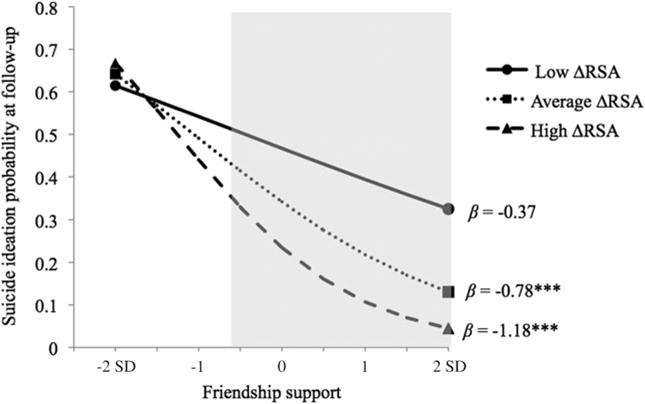Figure 1.

Interaction effect between friendship support and respiratory sinus arrhythmia (RSA) reactivity to the speech task on the probability of suicide ideation at follow-up. ΔRSA, RSA standardized residual scores. “Low” and “high” ΔRSA indicate scores 1 SD below and above the mean, respectively. Note that low and high ΔRSA reflect greater relative RSA decreases and increases to the speech task, respectively. The shaded area indicates the region of significance (lower and upper bounds are −13.80 and −0.59 SD from the mean); this indicates the values of friendship support outside which RSA reactivity significantly predicted suicide ideation (>−0.59 SD from the mean of friendship support). The interaction effect is plotted for adolescents who reported a lifetime history of suicide ideation (i.e., dummy-coded variable equal one).
